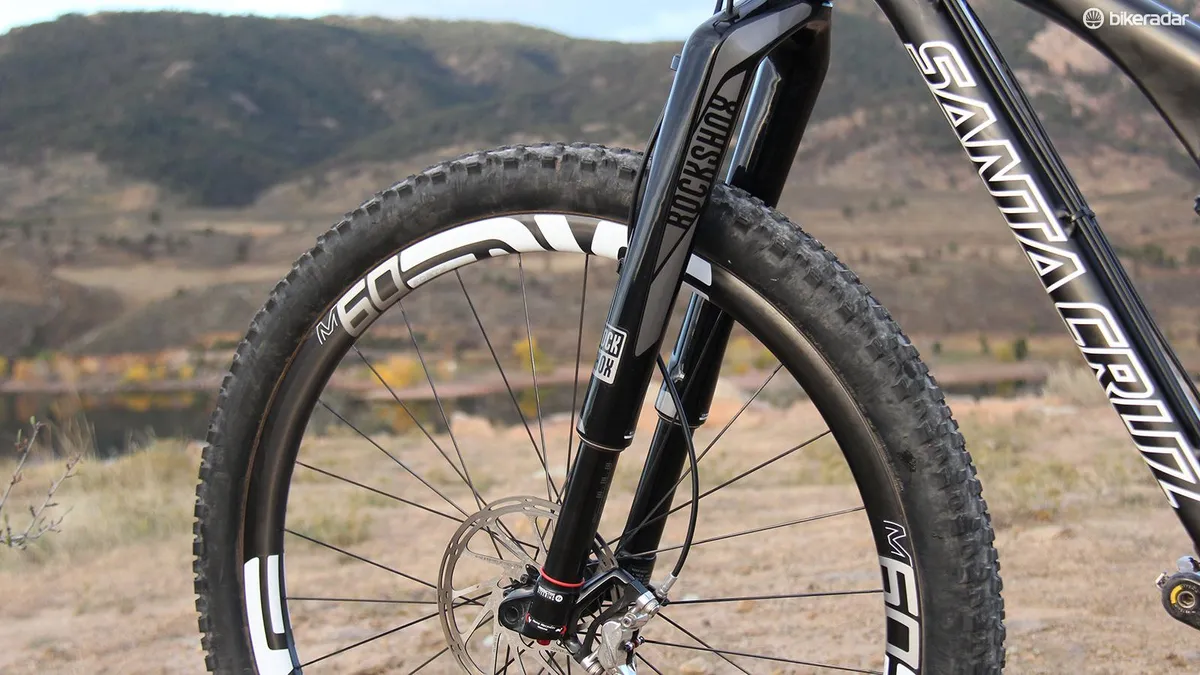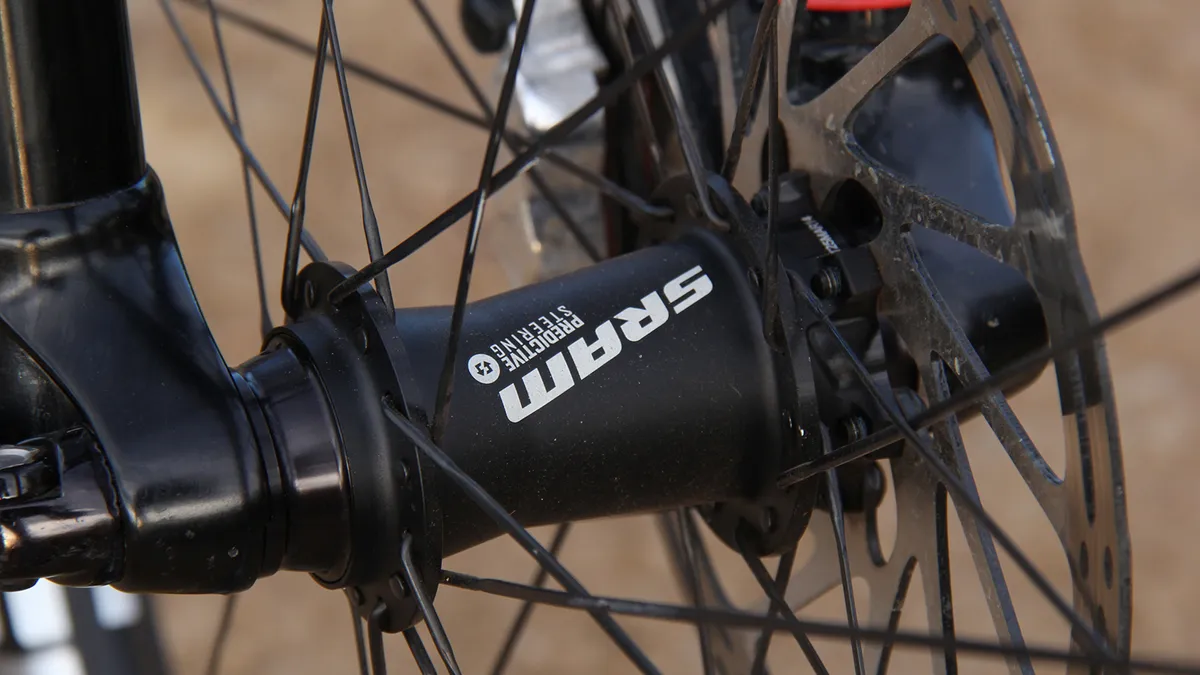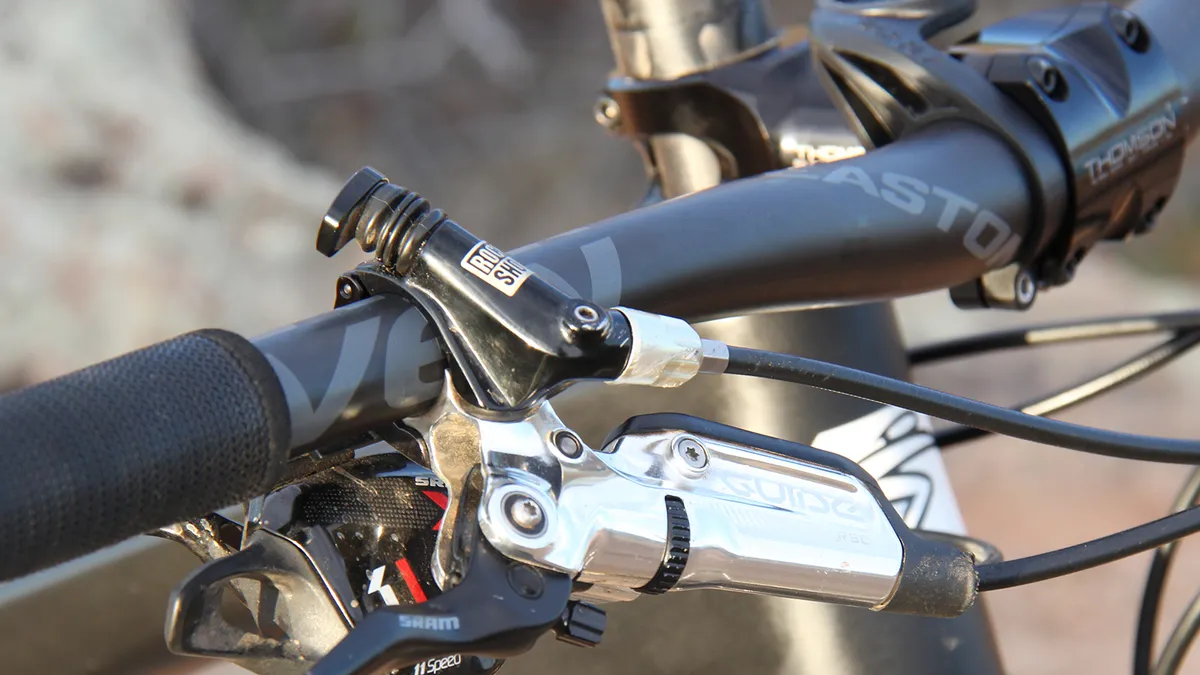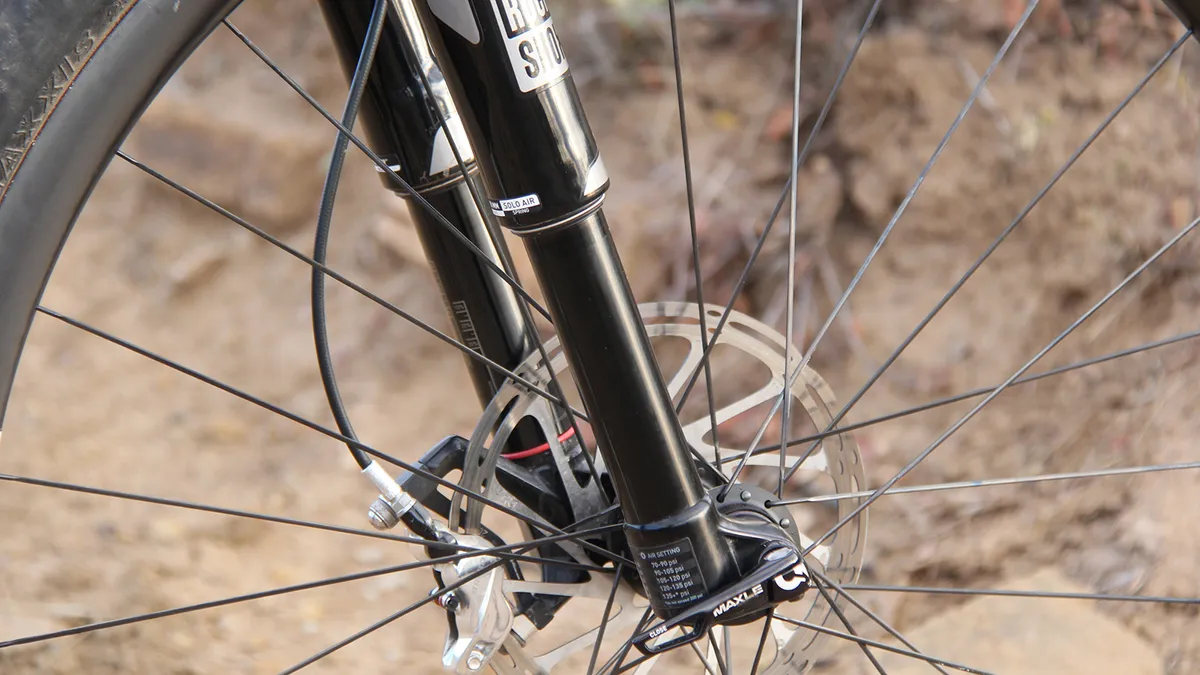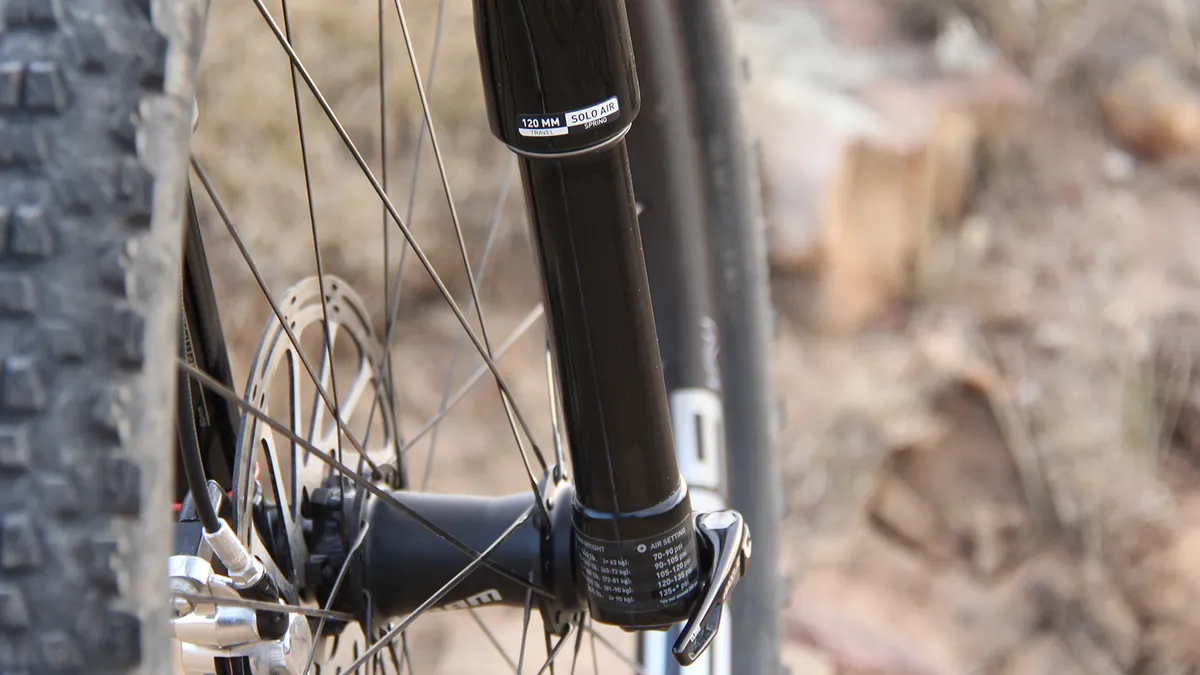When RockShox unveiled the RS-1 fork last spring, many mountain bikers were taken aback by its striking inverted design and astronomically steep price tag. After many months and hundreds of miles of testing on two 100mm and three 120mm RS-1 forks by three BikeRadar testers, we’re ready to weigh in on RockShox’ flagship cross-country offering – it’s thoroughly underwhelming.
- Pros: Striking looks, good fore/aft stiffness
- Cons: Price, weight, limited wheel options and a lack of torsional stiffness
It’s been 26 years since RockShox introduced its first suspension fork. The company reckons it has changed the mountain biking world again with the RS-1, but we’re not sure who actually lives in the world it’s designed for.
The radical upside-down design and extensive use of carbon make RS-1 look sensational. The tapered 1.125-1.5in steerer, crown and upper fork legs are all co-molded from carbon. Unfortunately, style and substance didn’t match up once we hit the trail.
The good
The RS-1 displays excellent fore/aft chassis stiffness. Straight-line stiffness over braking bumps and ledgy, rocky terrain is impressive; there's none of the "twangy" feeling one finds in a 120mm 29er fork with slender 32mm stanchions.
When set up properly, this fore/aft stiffness, the always-lubricated, upside-down seals, RockShox’ Dig Valve compression control and position-sensitive Rapid Recovery rebound result in a fork with outstanding small-bump sensitivity and excellent composure when gouging headlong through technical sections of trail.
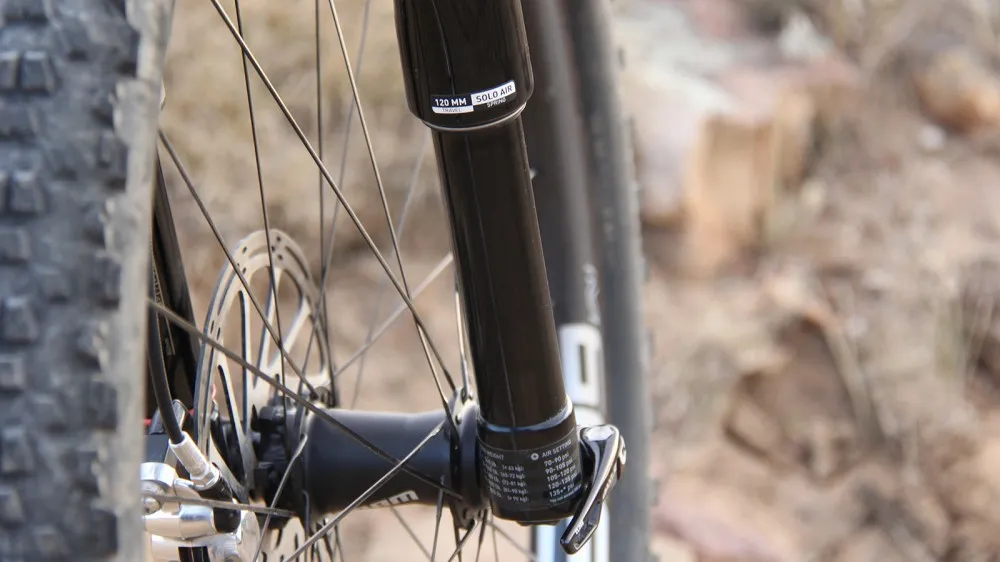
Despite early concerns about damage from rock strikes the lowers remained pristine through many months of testing
The Accelerator damper’s rock-solid hydraulic lockout is perfect for out-of-the-saddle sprints and grinding up smooth climbs. Unlike RockShox' SID, there’s no option for low-speed compression adjustment, with only a lockout and rebound knob present on the RS-1. It is, though, possible to use the adjustable Floodgate to get firmer, but still usable, travel when the fork is locked out.
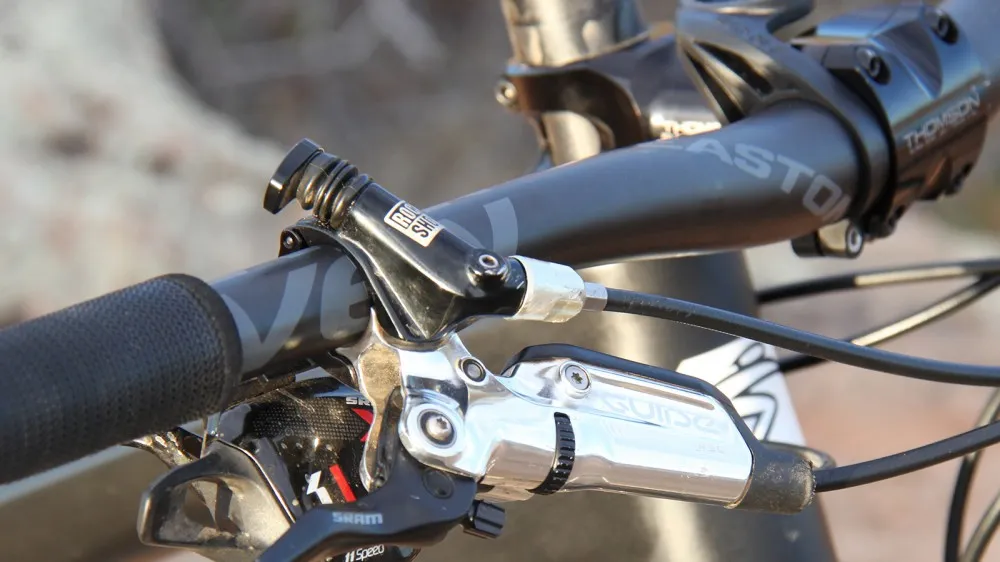
The RS-1 features very few external adjustments, but the Floodgate allows the user to adjust the firmness of the lockout
The bad
Unfortunately, this fork’s impressive steering precision vanishes the moment the RS-1 is leaned hard into corners. Despite the carbon chassis and the proprietary Predictive Steering front hub, which relies on oversized, 27mm endcaps and employs a proprietary 110x15mm front axle spacing, torsional flex is quite conspicuous. This on-again/off-again chassis stiffness is very unnerving, particularly when riding fast, unbermed turns.
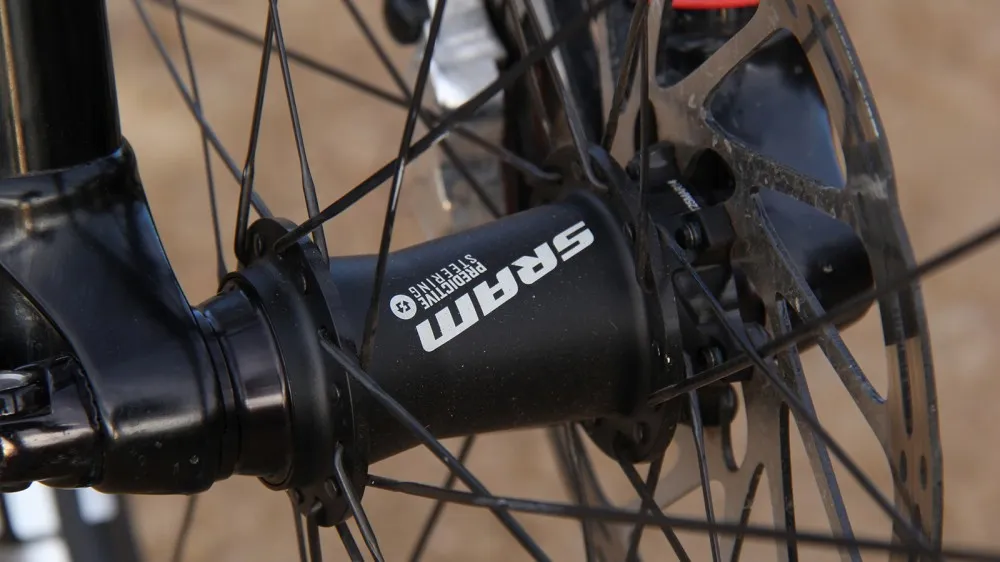
A new front wheel built around the RS-1's proprietary front hub must be factored into the already steep price of admission
Over time, we learned to compensate for the fork’s vague feel and adjusted our riding styles to straightline through entries, apexes and exits in order to offset steering flex with suspension strength whenever possible. But that's not an ideal situation with an entry-level fork, let alone one with a category-leading price tag.
Other considerations that must be made for the RS-1 as a result of its design include careful attention to accurate hose length trimming and alignment. This is critical to prevent the free-roaming front brake line from scuffing the spokes under compression.
Also, wheel installation and removal is more involved than with a standard fork with a 15mm thru-axle. Once the thru-axle is removed, the lower legs are free to pivot and change height as they please. It’s mildly comical when you’re not in a hurry, but the joke is on you when attempting to reinstall the wheel and axle after a mid-race puncture. A tip to RS-1 users: Locking the fork out before removing the wheel makes installation easier.
While inverted forks are the norm for motocross, the history of upside-down suspension forks on mountain bikes is mixed. Most inverted mountain bike forks have suffered from excessive torsional flex or, if they were stiff enough for the job, they came with a significant weight penalty over traditional designs. In this, the RS-1 is no different. It carries a 94g weight penalty over a comparable SID and, despite the proprietary Predictive Steering hub interface (which severely limits wheel options), it still suffers from the torsional stiffness issues that have plagued inverted designs of the past.
Lightweight cross-country forks such as the SID may not offer the same terrain-gobbling performance when pinning it though chunder, but they also don’t give up ground when leaned hard into corners. In our opinion, the price, predictable handling, lower weight, and wider range of external tuning options of the SID trump the RS-1 for cross-country use. For trail riding, meanwhile, the Pike’s impressively-refined Charger damper and stiffer chassis more than makes up for the 210g weight penalty over the RS-1.
Editor’s note: BikeRadar contacted Rockshox with our concerns over chassis stiffness. Since the RS-1 splits the difference in terms of weight between the SID and Pike – and stiffness is one of the claimed benefits of the RS-1 – we asked for comparative data on chassis stiffness between the RS-1 and a 120mm 29er Pike. After initially agreeing to supply this data, RockShox declined further requests.
Verdict
As a proof of concept, the RS-1 showcases SRAM’s ability to meld its expertise in carbon construction, suspension design and wheel technology in a manner unmatched by any of the company’s competitors. But as a rideable product, the RS-1 falls woefully short when compared with the lighter, more tunable SID and the indefatigable performance of the Pike, both of which can be had for less than half the price of the RS-1 and don’t require an additional investment in a proprietary axle system.
